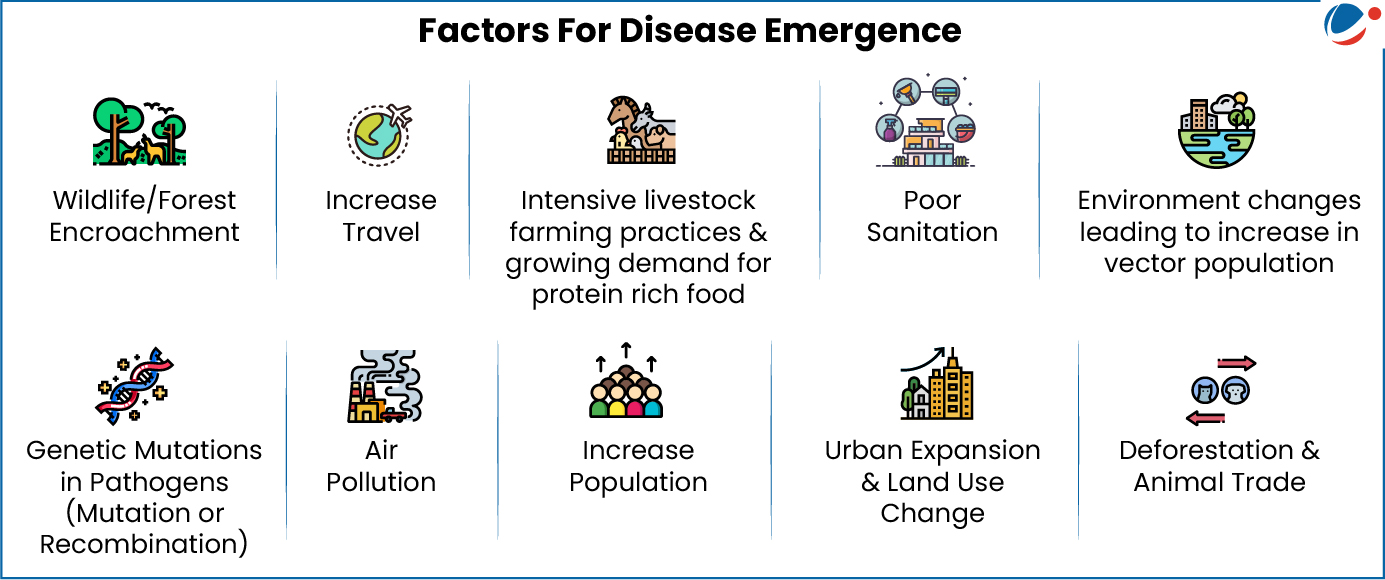The analysis reveals that of the outbreaks reported in IDSP, 8.3% were zoonotic, with a median of seven monthly zoonotic outbreaks.
- Japanese encephalitis accounted for 29.5% of zoonotic outbreaks, followed by leptospirosis and scrub typhus.
- Northeast region contributed to around one-third of zoonotic disease outbreaks, followed by Southern region.
About Zoonotic Diseases
- Zoonoses are defined as those diseases and infections which are naturally transmitted between vertebrate animals and people. (WHO)
- Zoonotic pathogens may be bacterial, viral or parasitic, and can spread to humans through direct contact or through food, water or the environment.
- Globally, about millions of deaths occur every year from zoonoses and 60% of reported emerging infectious diseases globally are zoonoses.

Initiatives taken
- Integrated Disease Surveillance Programme (IDSP): IDSP monitors data on six zoonotic diseases of human health importance i.e. Anthrax, Crimean-Congo haemorrhagic fever (CCHF), Rabies, Kyasanur Forest Disease (KFD), Leptospirosis and Scrub typhus.
- National One Health Programme for Prevention and Control of Zoonosis: Aims to institutionalize one health at national, state and district level, integrated surveillance, integrated community outreach program on One Health.
- Disease Specific Programs: National Rabies Control Program, Program for Prevention and Control of Leptospirosis and National Programme for Prevention and Control of Snakebite Envenoming.



